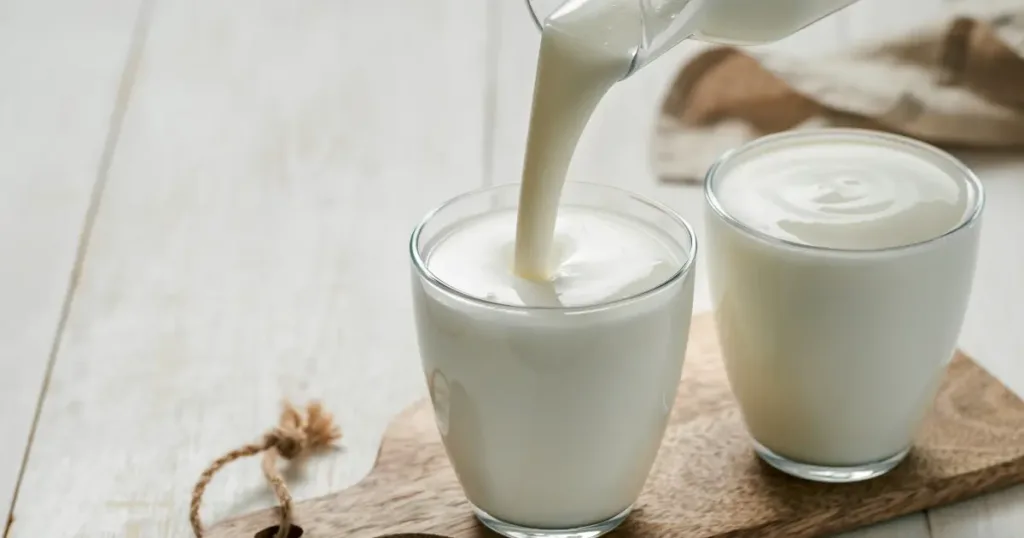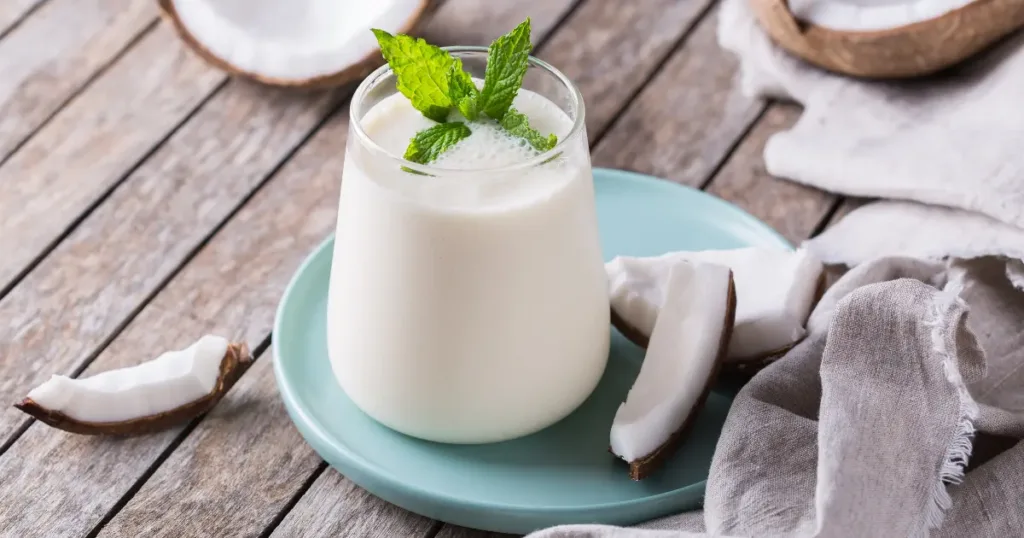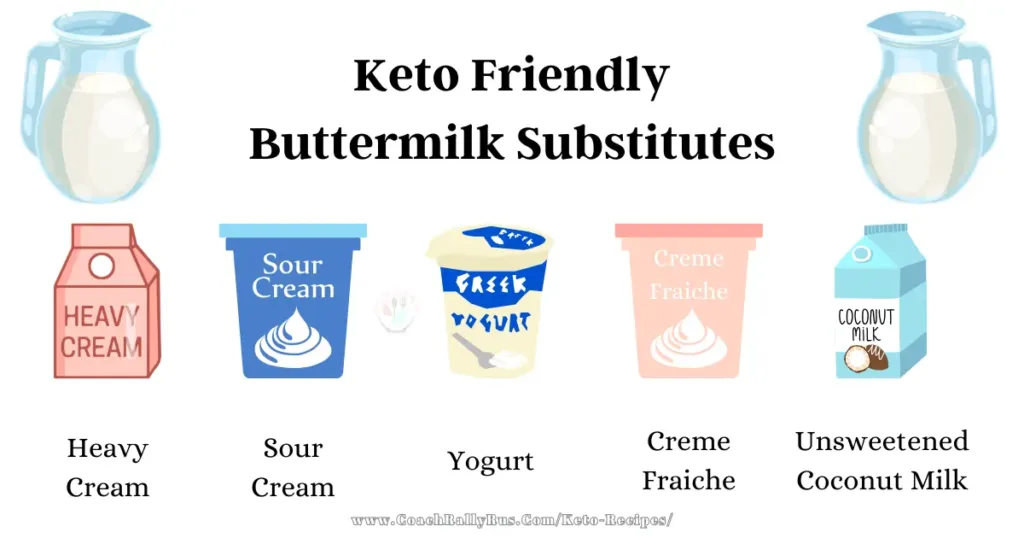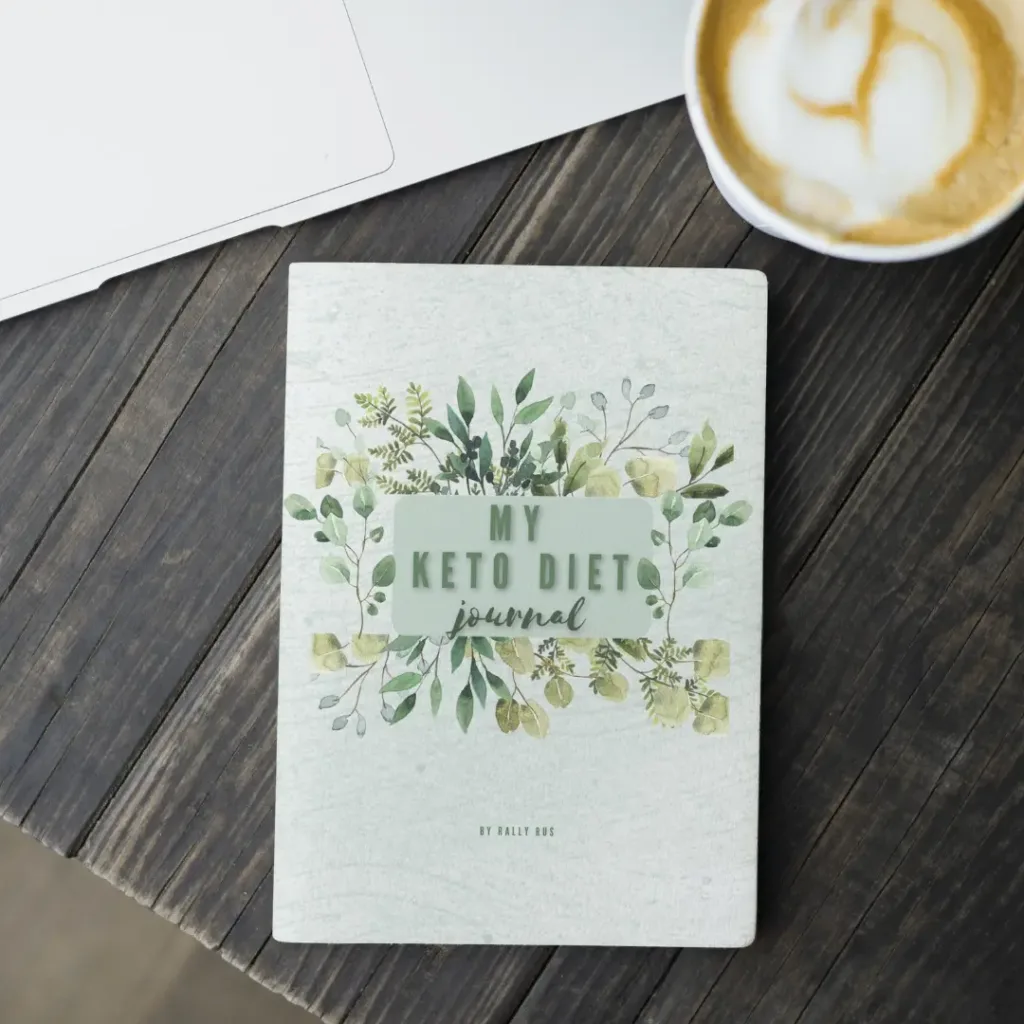In short, buttermilk is not very keto-friendly, especially if you consume large amounts of it or use store-bought buttermilk. However, you may be able to enjoy small amounts of traditional buttermilk on occasion, as long as you keep track of your carb intake and adjust your portions accordingly.
Buttermilk is a fermented dairy product that has some health benefits, such as boosting immunity and lowering cholesterol. But is buttermilk keto-friendly? How does it compare to other dairy products in terms of carbs, fat, and protein?
Buttermilk is a delicious and versatile ingredient that can be used in many recipes, from pancakes and biscuits to soups and sauces. But if you are following a keto diet for weight loss, you may be wondering:
- Is buttermilk keto friendly?
- How many carbs does buttermilk have?
- What are the health benefits of buttermilk?
- What are some keto-friendly alternatives or substitutes for buttermilk?
In this article, I aim to answer these questions, so you can decide whether to include buttermilk in your keto lifestyle or not.

What is Buttermilk?
Buttermilk is a fermented dairy drink that is traditionally made from the liquid left over after churning butter from cream. This liquid contains some milk fats, lactic acid bacteria, and water.
The bacteria ferment the lactose (milk sugar) in the liquid, producing lactic acid. This gives buttermilk its sour taste and thick consistency. The fermentation process also lowers the pH of the liquid. That makes it more acidic and prevents the growth of harmful bacteria.
However, most of the buttermilk sold in stores today is not the traditional buttermilk, but rather a cultured product that is made by adding bacteria to pasteurized low-fat or skim milk. This process mimics the natural fermentation of the traditional buttermilk. This results in a product that has a different nutritional profile and flavor.
Store-bought buttermilk is usually thicker, creamier, and less tangy than traditional buttermilk. It also has more carbs, less fat, and less protein than traditional buttermilk.

Is Buttermilk Keto Friendly?
The answer to this question depends on the type and amount of buttermilk you consume.
As a general rule, dairy products are allowed on a keto diet, as long as they are high in fat and low in carbs. However, not all dairy products are created equal, and some may have more carbs than you think. This is especially true for store-bought buttermilk, which has more lactose and less fat than traditional buttermilk.
According to the USDA, one cup (245 g) of store-bought buttermilk has about 12 grams of carbs, 2 grams of fat, and 8 grams of protein. This means that one cup of buttermilk has about 10 grams of net carbs (total carbs minus fiber), which is quite high for a keto diet.
Most keto dieters aim to consume no more than 20 to 50 grams of net carbs per day, depending on their individual goals and preferences.
Therefore, drinking a whole cup of buttermilk could take up half or more of your daily carb allowance, leaving little room for other foods.
On the other hand, traditional buttermilk has a lower carb and higher fat content than store-bought buttermilk.
According to the USDA, one cup (245 g) of traditional buttermilk has about 9 grams of carbs, 8 grams of fat, and 8 grams of protein. This means that one cup of traditional buttermilk has about 7 grams of net carbs, which is still relatively high for a keto diet, but not as much as store-bought buttermilk. However, traditional buttermilk is harder to find in stores, and you may have to make your own by churning butter from heavy cream.
In summary, buttermilk is not very keto-friendly, especially if you consume large amounts of it or use store-bought buttermilk. However, you may be able to enjoy small amounts of traditional buttermilk on occasion, as long as you keep track of your carb intake and adjust your portions accordingly.

Comparing the nutritional values of the top 5 buttermilk brands in the USA
| Brand | Calories | Fat | Protein | Net Carbs |
|---|---|---|---|---|
| Barber’s | 98 | 3 g | 8 g | 10 g |
| Land O Lakes | 110 | 2.5 g | 8 g | 11 g |
| Meyenberg Goat Milk | 130 | 6 g | 9 g | 10 g |
| Vermont Creamery | 120 | 5 g | 7 g | 11 g |
| President | 100 | 2 g | 8 g | 12 g |
What are the Health Benefits of Buttermilk?
Buttermilk is not only tasty but also healthy. It has some benefits that may improve your overall health and well-being, such as:
- It is a good source of protein: Protein is essential for building and repairing muscles, bones, skin, hair, and other tissues. It also helps regulate your metabolism, hormones, enzymes, and immune system. Buttermilk provides about 8 grams of protein per cup, which is about 16% of the recommended daily intake for an average adult.
- It is rich in calcium: Calcium is important for maintaining strong and healthy bones and teeth. It also helps with muscle contraction, nerve transmission, blood clotting, and hormone secretion. Buttermilk provides about 284 mg of calcium per cup, which is about 28% of the recommended daily intake for an average adult.
- It contains probiotics: Probiotics are beneficial bacteria that live in your gut and help with digestion, immunity, and mood. They also help prevent or treat some digestive disorders, such as diarrhea, constipation, irritable bowel syndrome, and inflammatory bowel disease. Buttermilk contains lactic acid bacteria, which are a type of probiotics that can improve your gut health and balance your gut flora.
- It may lower blood pressure and cholesterol: Buttermilk contains a type of fat called conjugated linoleic acid (CLA), which has anti-inflammatory and anti-cancer properties. It also helps lower blood pressure and cholesterol levels, and may reduce the risk of cardiovascular diseases and obesity. Buttermilk also contains a type of protein called lactoferrin, which has antibacterial and antiviral properties. It also helps lower blood pressure and cholesterol levels, and may prevent or treat some infections and inflammations.
Comparing buttermilk with other dairy products in terms of carbs, fat, and protein
A list of lower-carb alternatives for buttermilk are listed below.
Please note that the values are for one cup (245 g) of each product.
| Dairy Product | Calories | Fat | Protein | Net Carbs |
|---|---|---|---|---|
| Buttermilk | 98 | 2 g | 8 g | 10 g |
| Milk (whole) | 149 | 8 g | 8 g | 12 g |
| Milk (skim) | 83 | 0 g | 8 g | 12 g |
| Heavy cream | 821 | 88 g | 7 g | 6 g |
| Sour cream | 444 | 45 g | 9 g | 8 g |
| Plain yogurt | 149 | 8 g | 13 g | 10 g |
| Greek yogurt | 146 | 10 g | 23 g | 9 g |
| Creme fraiche | 110 | 12 g | 0.7 g | 0.7 g |
| Cottage cheese | 163 | 5 g | 25 g | 6 g |
| Cheddar cheese | 403 | 33 g | 25 g | 1 g |
What are Some Keto-Friendly Alternatives or Substitutes for Buttermilk?
If you are looking for a keto-friendly alternative or substitute for buttermilk, you have several options to choose from. Here are some of the most popular ones:

- Heavy cream: Heavy cream is one of the best keto-friendly dairy products, as it has a high fat and low carb content. One cup (238 g) of heavy cream has about 7 grams of carbs, 88 grams of fat, and 7 grams of protein. This means that one cup of heavy cream has about 6 grams of net carbs, which is similar to traditional buttermilk, but with much more fat and calories. Heavy cream can be used as a substitute for buttermilk in recipes that call for a thick and creamy liquid, such as sauces, soups, or baked goods. However, heavy cream does not have the same tangy flavor or acidity as buttermilk, so you may need to add some lemon juice or vinegar to mimic the taste of buttermilk.
- Sour cream: Sour cream is another keto-friendly dairy product that has a high fat and low carb content. One cup (230 g) of sour cream has about 9 grams of carbs, 45 grams of fat, and 9 grams of protein. This means that one cup of sour cream has about 8 grams of net carbs, which is slightly higher than traditional buttermilk, but with less fat and calories. Sour cream can be used as a substitute for buttermilk in recipes that call for a thick and tangy liquid, such as dips, dressings, or cakes. However, sour cream is not as liquid as buttermilk, so you may need to thin it out with some water or milk to achieve the desired consistency.
- Creme fraiche: Creme fraiche is a cultured cream product that has a high fat and low carb content. One cup (240 g) of creme fraiche has about 110 grams of calories, 12 grams of fat, 0.7 grams of protein, 0.7 grams of total carbs, 0.7 grams of net carbs, and 0 grams of fiber. Creme fraiche can be used as a substitute for buttermilk in recipes that call for a thick and creamy liquid, such as sauces, soups, or baked goods. However, creme fraiche does not have the same tangy flavor or acidity as buttermilk, so you may need to add some lemon juice or vinegar to mimic the taste of buttermilk.
- Plain yogurt: Plain yogurt is another keto-friendly dairy product that has a moderate fat and low carb content. One cup (245 g) of plain yogurt has about 11 grams of carbs, 8 grams of fat, and 13 grams of protein. This means that one cup of plain yogurt has about 10 grams of net carbs, which is similar to store-bought buttermilk, but with more protein and less fat. Plain yogurt can be used as a substitute for buttermilk in recipes that call for a thick and tangy liquid, such as smoothies, marinades, or muffins. However, plain yogurt is not as liquid as buttermilk, so you may need to thin it out with some water or milk to achieve the desired consistency.
- Unsweetened coconut milk: Unsweetened coconut milk is a keto-friendly plant-based alternative to buttermilk that has a high fat and low carb content. It’s perfect if you have lactose intolerance. One cup (240 g) of unsweetened coconut milk has about 3 grams of carbs, 57 grams of fat, and 5 grams of protein. This means that one cup of unsweetened coconut milk has about 2 grams of net carbohydrates, which is much lower than buttermilk, but with more fat and calories. Unsweetened coconut milk can be used as a substitute for buttermilk in recipes that call for a thin and creamy liquid, such as curries, soups, or ice creams. However, unsweetened coconut milk does not have the same tangy flavor or acidity as buttermilk, so you may need to add some lemon juice or vinegar to mimic the taste of buttermilk.
How to Make Your Own Keto Buttermilk Substitute
If you don’t have any of the keto-friendly alternatives or substitutes for buttermilk mentioned above, you can also make your own buttermilk substitute at home, using some simple ingredients. Here is a quick and easy recipe that you can follow:
- Ingredients:
- 1 cup of heavy cream
- 2 tablespoons of lemon juice or vinegar
- Directions:
- In a small bowl, whisk together the heavy cream and the lemon juice or vinegar until well combined.
- Let the mixture sit for about 10 minutes, or until it thickens and curdles slightly.
- Use the keto buttermilk substitute as you would use regular buttermilk in your recipes.

How to Use Keto Buttermilk Substitutes in Recipes
You can use keto buttermilk substitutes in various recipes that call for buttermilk, such as pancakes, biscuits, cakes, breads, muffins, waffles, scones, and more. However, you may need to adjust the amount and ratio of other ingredients to achieve the best results. Here are some general tips and guidelines that you can follow:
- Keto Blueberry Creme Fraiche Pound Cake: This keto dessert is moist, fluffy, and bursting with blueberries. It uses creme fraiche as a keto buttermilk substitute, which adds a rich and creamy texture and a slight tangy flavor to the cake. You can find the full Keto Blueberry Creme Fraiche Pound Cake recipe here.
- Keto Ice Cream Blueberry Frozen Creme Fraiche: This keto ice cream is smooth, creamy, and refreshing. It uses frozen creme fraiche as a keto buttermilk substitute, which adds a thick and velvety texture and a mild sour taste to the ice cream. You can find the full Keto Ice Cream Blueberry Frozen Creme Fraiche recipe here.
- Keto Strawberry Frozen Creme Fraiche: This keto frozen treat is similar to the blueberry version, but with strawberries instead of blueberries. It uses frozen creme fraiche as a keto buttermilk substitute, which adds a thick and velvety texture and a mild sour taste to the frozen treat. You can find the full Keto Strawberry Frozen Creme Fraiche recipe here.
- Keto Ranch Dressing Recipe with Greek Yogurt: This keto dressing is creamy, tangy, and flavorful. It uses Greek yogurt as a keto buttermilk substitute, which adds a thick and smooth texture and a sour taste to the dressing. Greek yogurt is a keto-friendly dairy product that has a moderate fat and low carb content. One cup (245 g) of Greek yogurt has about 146 grams of calories, 10 grams of fat, 23 grams of protein, 9 grams of total carbs, 9 grams of net carbs, and 0 grams of fiber. You can find the full Keto Ranch Dressing recipe here.
- Keto Cajun Alfredo Sauce: This keto sauce is creamy, cheesy, and spicy. It uses sour cream as a keto buttermilk substitute, which adds a thick and tangy base to the sauce. The sauce is made with butter, garlic, cream cheese, parmesan cheese, and cajun seasoning. You can find the full Keto Cajun Alfredo Sauce recipe here.
Read Next
- Kefir and Flaxseed Flour Cleanse Review and Keto Diet
- Is Tahini Keto Friendly?
- Are Pumpkin Seeds Low Carb?
- Are Black Eyed Peas Keto Friendly?
- Is Gyro Meat Keto Friendly? Should You Make It At Home?









